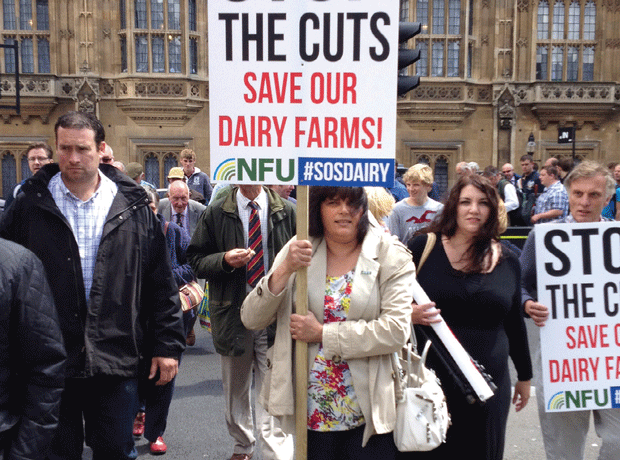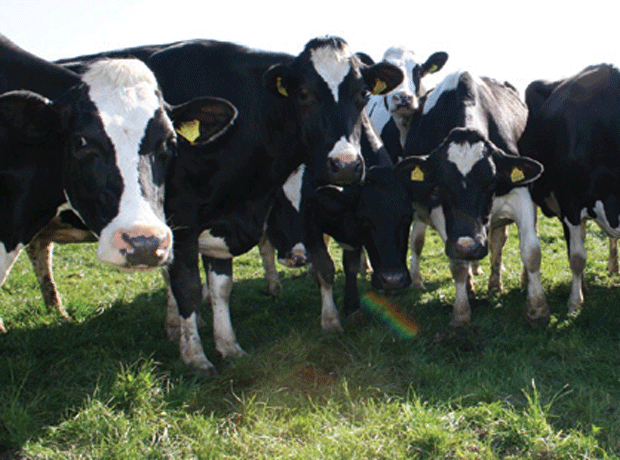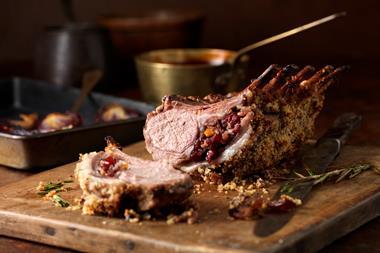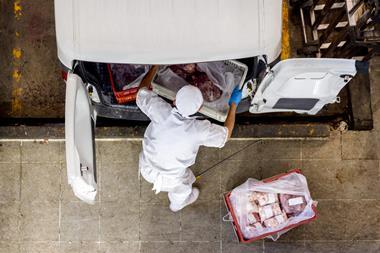Farmer desperation over milk price cuts has led to growing calls for a Fairtrade-style scheme. But how would such a model work?
What’s the big idea?
To create a UK equivalent of the scheme run by the Fairtrade Foundation, which ensures producers in developing countries get a fair deal. An increasing number of UK farmers are saying, “If it’s possible for conscientious British consumers to support ethical buying practices in the third world by looking out for the Fairtrade mark, surely it should be just as easy for them to support farmers in the UK.”
Why are we talking about this now?
The idea has been floating about for some time, but calls have been getting louder ever since dairy farmers were hit by two rounds of farmgate milk price cuts, with some now earning significantly less on a litre than it costs to produce it. This week’s farmer rally in Westminster, talk about protests at the Olympics and talk of desperate farmers contemplating pouring milk down the drain have ensured blanket coverage in the national media.
Who would run such a scheme?
To be credible to consumers, many believe an independent third party would need to be involved to oversee standards and handle certification. Consultancies such as Kite and Promar, already involved in dairy, could be candidates. Nick Everington, CEO of the Royal Association of British Dairy Farmers, believes the proposed Groceries Code Adjudicator could also play a part. There is little appetite among farmer organisations to run a scheme themselves, although NFU chief dairy adviser Rob Newbery says he wouldn’t rule anything out.
The Fairtrade Foundation, however, is unlikely to get involved. It points out deprivation faced by third-world producers is far greater, and says its specific expertise is in poverty in developing countries.
Would it apply only to milk?
Because of the recent price cuts, milk would probably be the first product to be covered by a UK scheme. There would be nothing to stop the idea from being rolled out to other primary sectors like red meat though, and some farmers are calling for it to cover processed products.
What do retailers think?
They don’t exactly seem convinced. The BRC says rather than a new label, energy should be put into supporting existing UK logos such as the Red Tractor and clear country-of-origin labelling, because those actually mean something to consumers. Food director Andrew Opie also points out that retailers’ price practices are already regulated through the Groceries Supply Code of Practice, making a separate fair price scheme redundant, and says retailers have been doing far more than manufacturers and public sector buyers to support farmers.
However, not all retailers are completely averse to the idea. Robert Craig - a former NFU Cumbria chairman now involved in trying to set up a “local and fair” milk brand - says there has been some retailer interest. “It should be a great opportunity for the supermarkets,” he says. “Those who are already using cost-of-production models should start shouting about them.”
Is there any evidence consumers would be interested?
Depends on who you ask. Opie says that although there is real consumer demand for good-quality, seasonal, UK-produced food - and clear labelling - there is “nothing to indicate demand for a fair trade scheme”. But farmer organisations such as the NFU and the RABDF as well as animal welfare campaigners such as the WSPA claim they would be able to garner sufficient support from the public, and there is growing demand for Fairtrade products. RABDF also says the WI has supported dairy farmers in the past and would be likely to support such a scheme.
How would it work in practice? How do you define a “fair” price?
This is where things get complicated. Everington suggests a starting point would be to look at a cost-of-production model and then apply an agreed “fair” margin on top, but working out standards and pricing structures would be challenging. Would all farmers get the same premium, regardless of how big their herds or how profitable their farms are?
Duncan Rawson, a partner at EFFP, also points out it’s relatively easy to garner public support when milk prices are low, but warns a premium could be a lot less attractive to consumers once global dairy commodities markets recover and farmers make better returns.
What other potential stumbling blocks are there?
Craig admits farmers would have to be very careful not to undermine the rest of the market. “Once you start highlighting one part of the liquid milk market, you could devalue the rest,” he says. Retailers might also be nervous about highlighting strong pricing practices on liquid milk if consumers got the impression their farmer relationships were less “fair” on other products, such as cheese.
Given those challenges, is anyone actually going to try to do this?
Yes. Craig says he is working with Cumbrian farmers to develop a “local and fair” milk brand. The group hopes to have the scheme up and running in 2013. There is also work going on to develop a free-range dairy brand that would focus primarily on animal welfare but would also have a fair pricing element, according to WSPA head of external affairs Simon Pope. “The brand would be about highlighting support for extensive, small-scale British dairy producers,” he says.
What about the “social element” of the Fairtrade scheme, which sees part of the premium fed back into local communities?
Unlikely. After all, the needs of rural communities in the UK are a world away from the deprivation in developing countries. However, some suggest environmental and/or animal welfare standards could very well be tied to a fair price premium. Pope says he would want to see two tiers in any national fair trade scheme, to “reward” producers who look after the countryside.
And Craig believes the local sourcing element is vital to the brand he is trying to create. “If you can hang a local tag on it, it’s yet another means of selling it,” he says, adding there would also be a requirement for cows to be outdoors.


















No comments yet